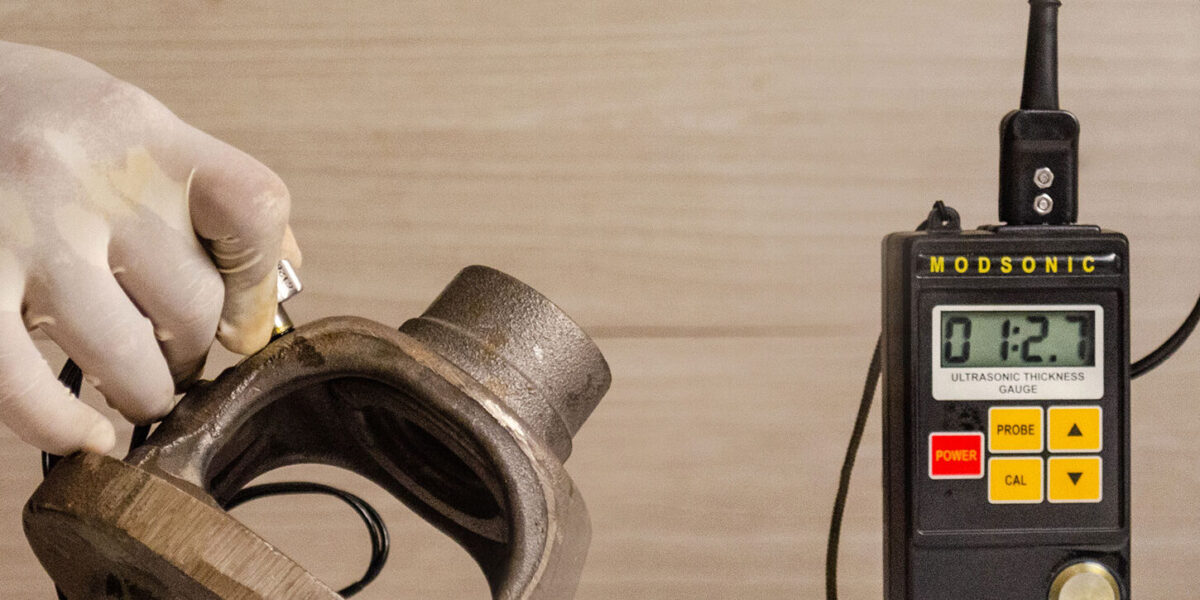Choosing the Right Ultrasonic Thickness Meter for Your Needs

Selecting the appropriate ultrasonic thickness meter is crucial for ensuring accurate measurements and reliable inspections across various industrial applications. Whether you’re involved in manufacturing, maintenance, or quality control, understanding the key factors that influence your choice can streamline operations and enhance efficiency. This blog provides a comprehensive guide to help you navigate the process of choosing the right ultrasonic thickness meter for your specific needs.
Understanding Ultrasonic Thickness Meters
Ultrasonic thickness meter is a non-destructive testing (NDT) devices that utilize ultrasonic waves to measure the thickness of materials. These meters are indispensable in industries such as aerospace, automotive, oil and gas, and manufacturing, where assessing material thickness is critical for ensuring structural integrity and safety. The principle behind ultrasonic thickness measurement involves emitting high-frequency sound waves into the material and calculating thickness based on the time it takes for the waves to travel through and return.
Key Considerations When Choosing an Ultrasonic Thickness Meter
- Material Type and Thickness Range: Different ultrasonic thickness meters are designed to handle various materials, including metals, plastics, composites, and ceramics. Consider the range of thicknesses you need to measure and ensure the meter’s capabilities align with your specific material requirements.
- Measurement Accuracy: Accuracy is paramount in ultrasonic thickness measurement. Look for meters that provide precise measurements within acceptable tolerances for your application. Higher accuracy ensures reliable data for decision-making in maintenance and quality control processes.
- Transducer Frequency and Configuration: The frequency of the ultrasonic waves emitted by the transducer affects the meter’s ability to penetrate materials and detect defects. Lower frequencies penetrate thicker materials but may sacrifice resolution, while higher frequencies offer better resolution for thinner materials. Consider the transducer configuration (single element, dual element, or multiple element arrays) based on your inspection requirements.
- Display and User Interface: An intuitive user interface and clear display are essential for ease of operation, especially in industrial environments. Look for features such as backlit displays, customizable settings, and user-friendly menus that facilitate efficient data collection and interpretation.
- Data Logging and Connectivity: For comprehensive data management, choose a thickness meter that offers data logging capabilities. Some advanced models allow for storing and exporting measurement data to external devices or software for further analysis. Connectivity options such as USB ports or wireless capabilities enhance versatility and integration with existing systems.
- Battery Life and Durability: Consider the operational environment and duration of use when evaluating battery life. A robust, durable construction ensures the meter can withstand harsh conditions, vibrations, and potential impacts encountered in industrial settings.
Types of Ultrasonic Thickness Meters
- Handheld Ultrasonic Thickness Meters: Ideal for field inspections and on-site measurements, handheld meters offer portability and ease of use. They are suitable for applications where mobility and flexibility are crucial, such as inspecting pipelines, tanks, and structural components.
- Benchtop Ultrasonic Thickness Gauges: Benchtop meters are typically more powerful and offer advanced features suitable for laboratory or workshop environments. They provide greater accuracy and measurement capabilities for detailed inspections and quality control processes.
Best Practices for Choosing and Using Ultrasonic Thickness Meters
- Evaluate Specifications: Compare specifications such as measurement range, accuracy, resolution, and frequency to ensure they meet your specific requirements.
- Consider Application Requirements: Tailor your choice based on the types of materials, thicknesses, and environmental conditions you regularly encounter.
- Training and Support: Invest in training for operators to maximize the effectiveness of the ultrasonic thickness meter and ensure accurate measurements.
- Regular Calibration: Maintain measurement accuracy by adhering to manufacturer-recommended calibration schedules and procedures.
Future Trends in Ultrasonic Thickness Measurement Technology
- Integration with IoT and Industry 4.0: Increasing connectivity and integration with digital platforms for real-time data monitoring, analysis, and predictive maintenance.
- Advancements in Sensor Technology: Development of more sensitive and versatile sensors for enhanced defect detection and characterization.
- Automation and AI: Utilization of artificial intelligence algorithms for automated defect recognition and decision-making based on ultrasonic inspection data.
Conclusion
Choosing the right ultrasonic thickness meter involves understanding your specific application requirements, evaluating technical specifications, and considering future technological advancements. By selecting a meter that aligns with your measurement needs, operational environment, and budget, you can enhance efficiency, ensure accurate inspections, and maintain the integrity of critical assets. As industries continue to evolve, the integration of advanced ultrasonic thickness measurement technologies promises to drive innovation and improve reliability in non-destructive testing practices.
Follow HitupNews for more.









